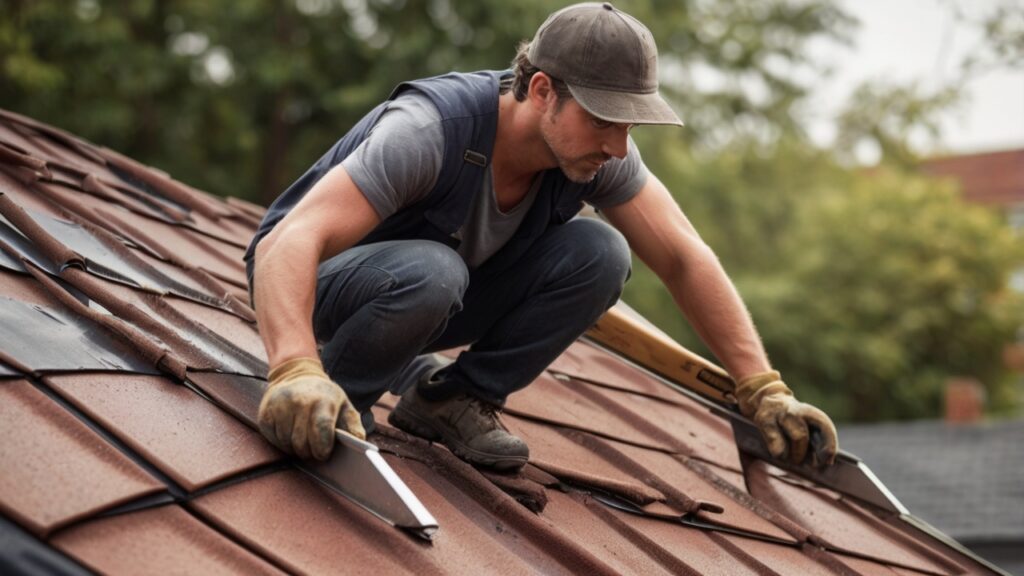It might sound like a small detail, but the best temperature for roofing can make or break the results of your roof installation or repair. In fact, many professional contractors quietly plan their work calendars around the ideal weather for roof installation, especially when dealing with asphalt shingles or other heat-sensitive materials.
The temperature of the day isn’t just a number on a weather app—it’s a factor that decides whether your shingles seal properly, whether adhesives stick, or whether the structure develops tiny weaknesses you’ll only notice years later. And yes, it has happened before. I once saw a neighbor in North Carolina rush to install shingles in freezing weather; they looked fine at first, but within six months, several edges curled up. It was frustrating for them, but it was also a real-life lesson about how roofing temperature matters more than we think.
Roofing projects are often delayed because of the weather, but those delays are actually signs of a trusted and reliable contractor protecting your home’s long-term durability. Skipping the patience step might feel convenient, but shortcuts usually cost more in repairs down the road.
- Why Temperature Shapes the Roofing Process
- The Role of Season and Location
- Tools, Spare Parts, and Repair Processes
- Common Problems If best Temperature for roofing Is Ignored
- Real Case Example: A Successful Project
- Expanding Knowledge Beyond Best Temperature for Roofing
- Seasonal Roof Repair Tips for Homeowners
- FAQs
Why Temperature Shapes the Roofing Process
Roofing materials are designed to expand, contract, and bond within certain thermal ranges. Most experts agree that the ideal temperature for roof installation falls between 45°F and 85°F. Why?
- Below 45°F, asphalt shingles become brittle. Nails can crack them. Sealant strips don’t activate properly.
- Above 85°F, shingles get soft and can scuff easily. Walking on them may cause permanent marks or even slight dents.
Special adhesives and sealants also react differently. In colder conditions, they stay stiff. In extreme heat, they become overly tacky and hard to adjust once set. Professional roofers actually carry infrared thermometers to check surface temperatures before starting.
According to Mark Ellis, a certified roofing specialist from Charlotte, “Temperature is the one invisible tool we always consider. You can have the best crew and premium materials, but if the climate isn’t right, the results will never be reliable.”
The Role of Season and Location
In North Carolina, roofing contractors face unique challenges. Winters can get chilly, but summers bring heat and humidity. For that reason, spring and fall are usually considered the best seasons for roofing projects in the state. Contractors aren’t just choosing these times randomly; it’s a professional strategy to ensure shingle installation temperature is near-perfect.
If you live in a hotter region, roofers might start work earlier in the morning before the roof deck heats up. In cooler areas, they might wait until midday when the sun naturally warms the surface. This adaptation shows why choosing an expert and professional team is worth it—they know these tricks instinctively.
Tools, Spare Parts, and Repair Processes
Roof repair isn’t only about nailing down shingles. A professional crew uses:
- Roofing nail guns calibrated to drive nails to the right depth without splitting material.
- Sealant guns with temperature-sensitive adhesives designed for asphalt shingles.
- Ventilation parts like ridge vents and soffit vents, which must be installed at the right weather conditions to ensure airflow.
A small mistake in temperature control can lead to warped underlayment or cracked flashing. For example, aluminum flashing is more prone to bending damage during extreme cold. A reliable contractor knows this and adjusts their handling techniques.
I remember visiting a site where the crew kept a heat gun handy—not for comfort, but to slightly warm up shingles during a cold snap. That’s the kind of detail that separates amateurs from professionals.
Common Problems If best Temperature for roofing Is Ignored
Ignoring the importance of roofing temperature can cause:
- Shingles failing to seal, leading to leaks.
- Premature aging and curling edges.
- Nails backing out because the material expanded and contracted improperly.
- Extra costs from seasonal roof repair that could’ve been avoided.
Think about it like painting in the rain: technically possible, but guaranteed to look bad in a year. Roofing is the same.
Real Case Example: A Successful Project
In Raleigh, a homeowner had their roof replaced in late October—just before colder nights kicked in. The contractor waited until mid-morning to start each day, ensuring the shingles were flexible enough to handle. That roof lasted through three hurricanes without a single shingle blown off. The homeowner later told me, “I didn’t know temperature mattered that much, but it made all the difference.”
Stories like these highlight why companies featured in guides such as this roundup of reliable roofing repair professionals in North Carolina are worth trusting. They follow best practices rather than rushing a job.
For broader tips on maintenance, you can explore other insights shared on Pro Service Tips’ roofing advice hub.
Expanding Knowledge Beyond Best Temperature for Roofing
Talking about roofing material temperature guide is just the beginning. Other equally fascinating aspects include:
- How storm preparation changes the way repairs are prioritized. For instance, emergency tarping services during hurricane season need different tools.
- The impact of attic insulation on roof performance—sometimes the problem isn’t outside but inside the house.
- Advances in eco-friendly roofing, like reflective shingles that lower cooling bills in the South.
- Small but overlooked upgrades such as gutter guards or flashing replacement, which can double the lifespan of a repair.
These topics don’t just belong in checklists—they naturally grow from conversations about the climate, seasons, and roofing’s delicate relationship with weather. Future guides could dive deeper into these areas to help homeowners make smarter, longer-lasting decisions.
Seasonal Roof Repair Tips for Homeowners
Here are some practical takeaways:
- Don’t pressure contractors to work during unsuitable weather. If they advise a delay, it’s for good reason.
- Always ask about the temperature range recommended for your chosen roofing material.
- If an emergency fix is needed during winter, temporary solutions may be applied until conditions are right.
This mindset turns homeowners into partners in the process, making sure the investment is protected.
FAQs
Q1: What is the lowest temperature for asphalt shingle installation?
Most experts say 45°F is the minimum. Below this, shingles crack more easily and sealant may not bond.
Q2: Can roofing be done in very hot weather?
Yes, but roofers must take precautions. Work often starts earlier in the morning to avoid surface overheating and material scuffing.
Q3: Why do professionals delay projects because of weather?
Because durability matters more than speed. A reliable repair done under the right conditions lasts longer and prevents costly callbacks.
The truth is simple: the best weather for roofing is not about personal convenience—it’s about protecting your home with a job that lasts. Temperature is the invisible hand guiding every nail, seal, and shingle. By working with a trusted roofing repair expert, you’re not only getting materials installed but ensuring those materials perform the way they were designed to.
For more in-depth stories and professional recommendations, you can check out this full guide to dependable roofing services in North Carolina.
If this article helped you, don’t keep it to yourself—share it on your social media using the buttons below. Someone else in your circle might be planning a roof project and needs this information right now.



